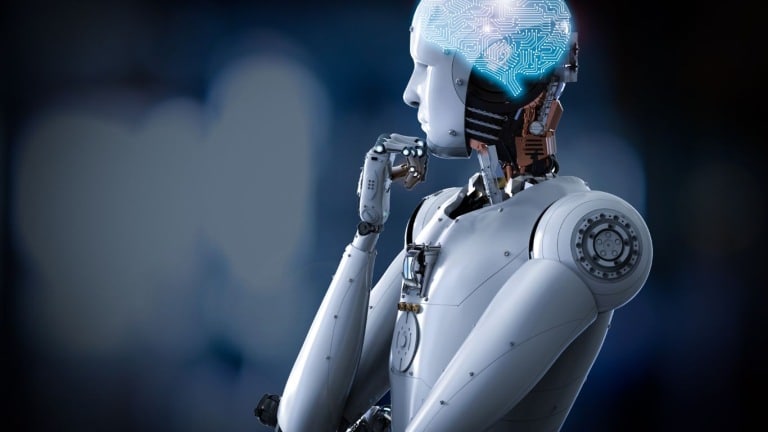3 Types Of Machine Learning: Supervised, Unsupervised, And Reinforcement

If you look back into the past, don’t read this article. If you want to have a short glimpse of tomorrow, you are at the front of the written article. Today, we will talk about Machine Learning and not in general; we dive a bit deeper into the 3 Types Of Machine Learning.
Let’s take a look closer to the “sky of tomorrow”.
What are the 3 Types Of Machine Learning? Simply put: there are three main types of machine learning: supervised learning, unsupervised learning, and reinforcement learning. Each of these approaches has its own benefits and drawbacks, and it is important to understand them all to effectively implement machine learning solutions. In this blog post, we will explore these three types of machine learning in more detail.
1) Supervised Learning

It’s a concept that can seem a bit intimidating at first. But, when broken down into its simplest components, it’s actually quite easy to understand.
Supervised learning is one of the main components of machine learning and it refers to a type of machine learning algorithm where the data used for training has been labeled. Basically, this means that the algorithm has a set of known inputs and outputs, and it’s task is to learn from the data provided to find patterns and correlations.
When creating a supervised learning model, data scientists and machine learning experts will typically use existing data sets in order to “teach” the algorithm about the correlation between input and output variables. This process involves looking for patterns between the data points and then applying them to new datasets. Once the model has been trained, it can be used to make predictions on new, previously unseen data.
An example of supervised learning is a computer vision application. This type of application takes in an image as input and then applies algorithms to classify the object or scene shown in the image. With supervised learning, the algorithm would first be trained using images with labels so that it learns to identify objects accurately. Once the model is trained, it can be used to classify new images without the need for labels.
2) Unsupervised Learning

Have you ever wondered what it would be like to teach a computer to think and make decisions without programming it? Sounds a bit SF, but I think we are not too far. Unsupervised learning is a type of machine learning that enables machines to learn from data without being provided explicit instructions on what to do.
Unlike supervised learning, unsupervised learning algorithms don’t require labeled training data. Instead, they are given input and learn patterns in the data on their own. The goal of unsupervised learning is to discover hidden structures in the data without any prior information.
One example of unsupervised learning is clustering, which is the process of partitioning data into distinct groups based on similarity. It’s used for pattern recognition and identifying correlations between different types of data. Clustering can be used for market segmentation, image analysis, customer segmentation, and more.
Another example of unsupervised learning is anomaly detection, which is the process of detecting outliers and abnormalities in data. Anomaly detection algorithms analyze patterns in the data and identify samples that deviate significantly from normal behavior. It’s used in fraud detection, intrusion detection, and medical diagnosis.
Finally, unsupervised learning can also be used for feature engineering. Feature engineering is the process of transforming raw data into features that can be used by machine learning algorithms. Unsupervised learning can help to identify useful features from raw data that may not be obvious at first glance.
No doubt that unsupervised learning algorithms have many potential applications, from market segmentation to fraud detection. As algorithms become more powerful and data sets become larger, the potential for unsupervised learning to revolutionize how we use data will only continue to grow. What other possibilities does unsupervised learning hold? Can it teach us something about the world around us? Only time will tell!
3) Reinforcement Learning

In simple words, Reinforcement Learning (RL) is a powerful technique that enables machines to learn from their environment and take actions based on the feedback they receive. Unlike supervised learning, RL does not require labeled data, instead using trial-and-error learning to identify the best action to take in a given situation. It’s like teaching a child to play a game—rewarding them when they take the right action and punishing them when they take the wrong action.
With RL, machines can explore their environment and interact with it in order to find the most beneficial outcome. It’s a form of trial-and-error learning that allows machines to learn without explicit instructions or labels. RL algorithms use a reward system to reinforce desired behaviors and discourage undesirable ones. For example, in the case of a self-driving car, the reward could be to stay on the road, while avoiding any obstacles or breaking the speed limit.
The goal of reinforcement learning is to find the optimal policy for an agent that interacts with its environment. An agent is an entity that takes actions in an environment, such as a robot or a computer program. The environment can be physical, such as a self-driving car, or virtual, such as a computer game. Through trial and error, the agent learns to select the best action at each step in order to maximize its rewards.
Reinforcement learning is widely used in applications such as robotics, autonomous navigation, and robotics. As more and more devices become connected to the Internet of Things, reinforcement learning will continue to be an important tool for enabling smart devices to make intelligent decisions.
With its ability to provide meaningful rewards, reinforcement learning has the potential to revolutionize the way we interact with our environment and unlock entirely new possibilities for machine learning.
Instead conclusion about 3 Types Of Machine Learning

By understanding the three main types of machine learning – supervised learning, unsupervised learning, and reinforcement learning – you can gain insights into the processes that drive AI systems and how they can be applied to specific tasks.
But where do we go from here? Are there other types of machine learning that we have yet to explore? What more can be done with the existing techniques? With the ever-evolving field of AI and machine learning, these are questions that will need to be answered as we continue to push the boundaries of what is possible.

About the Author
Liviu Prodan
Liviu is an experienced trainer and LifeHacker. He’s been living the ‘Corpo life’ for more than 15 years now and has been a business developer for more than 12 years. His experience brings a lot of relevancy to his space, which he shares on this blog. Now he pursue a career in the Continuous Improvement & Business Development field, as a Lean Six Sigma Master Black Belt, a path that is coherent with his beliefs and gives him a lot of satisfaction.








